I'm going to make some suggestions based on my experience with making living building and racing these things.

I see potential issue with this design. Due to offset mounting points, forces from pulling trailer and braking will generate lots of torque at attachment point on frame due to long cantilever arm.

Not to mention your intersection is at odd angles, so you'll need double-square clamp made for that specific angle between 2 beams. Something like these. You can just weld 2 sections of larger square-tubing at proper angle. Slice them in half and add lugs for clamping bolts.
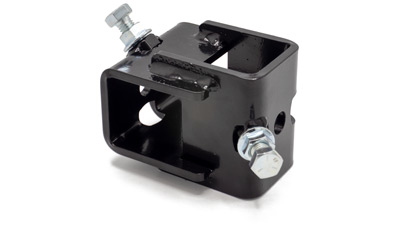
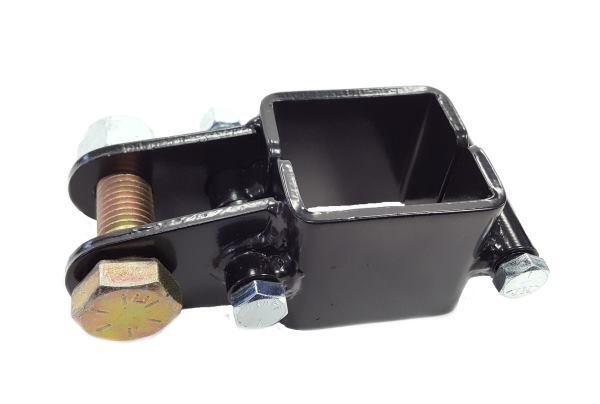
Torque at that junction will add significantly more stress on both your tow-bar and frame than pulling or braking forces. It's like hammering or pulling nails, when forces are in-line with material, it's very strong. But when bending & twisting forces are applied, like bending half-installed nail laterally with pliers, it will break very easily with repeated stress-cycles. Whatever clamping mechanism you use will need to be 4-5x stronger than tubing or frame itself. That torque will also squat and lift your back-end up & down when you accelerate or brake.
That's why tow-bars for ST1300 and Vespas are directly in-line with forces they will face. Least amount of stress on parts for any given load. Also won't push up or down on frame and compress/extend suspension.

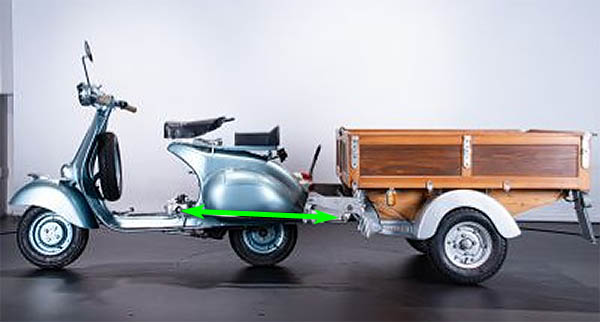
You want it to be like ST1300 or Vespa tow-bar where forces are inline and it only experiences tension & compression. This lowers stresses at attachment points on frame significantly.
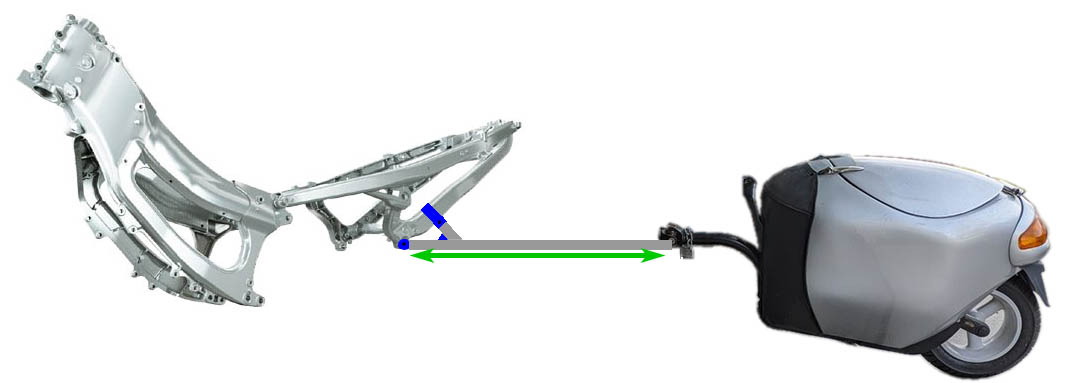
Can use pre-made eyelets for mounting to lower part of subframe with longer bolt. Upright w/gusset to prevent rotation can just use longer square-clamp. Again, loads will be in-line with material (and triangulated), so very little clamping force needed.

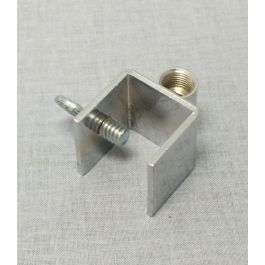
Make it as straight as possible like ST1300 tow-bar for strongest load-handling. Can get pre-made loops for end. Much, much stronger than angled cuts which focuses significant percentage of loads at points on outer skin.

Notice on ST1300 tow-bar, there's an upright to deal with rotation, but it's very minor thin bracket because there's very little torque since loads are in-line with beam.

A plate on inside radius for mounting trailer-ball. Rather than straight edge, better design is to make it crescent-shaped so some of it will run forward with tubing to re-inforce it and reduce stress riser at interface.
I wouldn't use stainless for this, it's good for looks, but not strength. Better to use 4130 chromoly or 1020/1022 mild-steel. Even though chromoly was designed to build aircraft frames with oxy-acetylene torche, it can be TIG-welded easily. Be sure to do pre-heating and post-weld annealing to make HAZ tougher and less crack-prone.
Of course, it really comes down to strength-to-weight ratio. Z-shaped load-path with offset end-points will end up 2-3x heavier than ST1300 tow-bar for 1/2 the strength. Better to over-build it than under.
I see potential issue with this design. Due to offset mounting points, forces from pulling trailer and braking will generate lots of torque at attachment point on frame due to long cantilever arm.
Not to mention your intersection is at odd angles, so you'll need double-square clamp made for that specific angle between 2 beams. Something like these. You can just weld 2 sections of larger square-tubing at proper angle. Slice them in half and add lugs for clamping bolts.
Torque at that junction will add significantly more stress on both your tow-bar and frame than pulling or braking forces. It's like hammering or pulling nails, when forces are in-line with material, it's very strong. But when bending & twisting forces are applied, like bending half-installed nail laterally with pliers, it will break very easily with repeated stress-cycles. Whatever clamping mechanism you use will need to be 4-5x stronger than tubing or frame itself. That torque will also squat and lift your back-end up & down when you accelerate or brake.
That's why tow-bars for ST1300 and Vespas are directly in-line with forces they will face. Least amount of stress on parts for any given load. Also won't push up or down on frame and compress/extend suspension.
You want it to be like ST1300 or Vespa tow-bar where forces are inline and it only experiences tension & compression. This lowers stresses at attachment points on frame significantly.
Can use pre-made eyelets for mounting to lower part of subframe with longer bolt. Upright w/gusset to prevent rotation can just use longer square-clamp. Again, loads will be in-line with material (and triangulated), so very little clamping force needed.
Make it as straight as possible like ST1300 tow-bar for strongest load-handling. Can get pre-made loops for end. Much, much stronger than angled cuts which focuses significant percentage of loads at points on outer skin.
Notice on ST1300 tow-bar, there's an upright to deal with rotation, but it's very minor thin bracket because there's very little torque since loads are in-line with beam.
A plate on inside radius for mounting trailer-ball. Rather than straight edge, better design is to make it crescent-shaped so some of it will run forward with tubing to re-inforce it and reduce stress riser at interface.
I wouldn't use stainless for this, it's good for looks, but not strength. Better to use 4130 chromoly or 1020/1022 mild-steel. Even though chromoly was designed to build aircraft frames with oxy-acetylene torche, it can be TIG-welded easily. Be sure to do pre-heating and post-weld annealing to make HAZ tougher and less crack-prone.
Of course, it really comes down to strength-to-weight ratio. Z-shaped load-path with offset end-points will end up 2-3x heavier than ST1300 tow-bar for 1/2 the strength. Better to over-build it than under.
Last edited:




